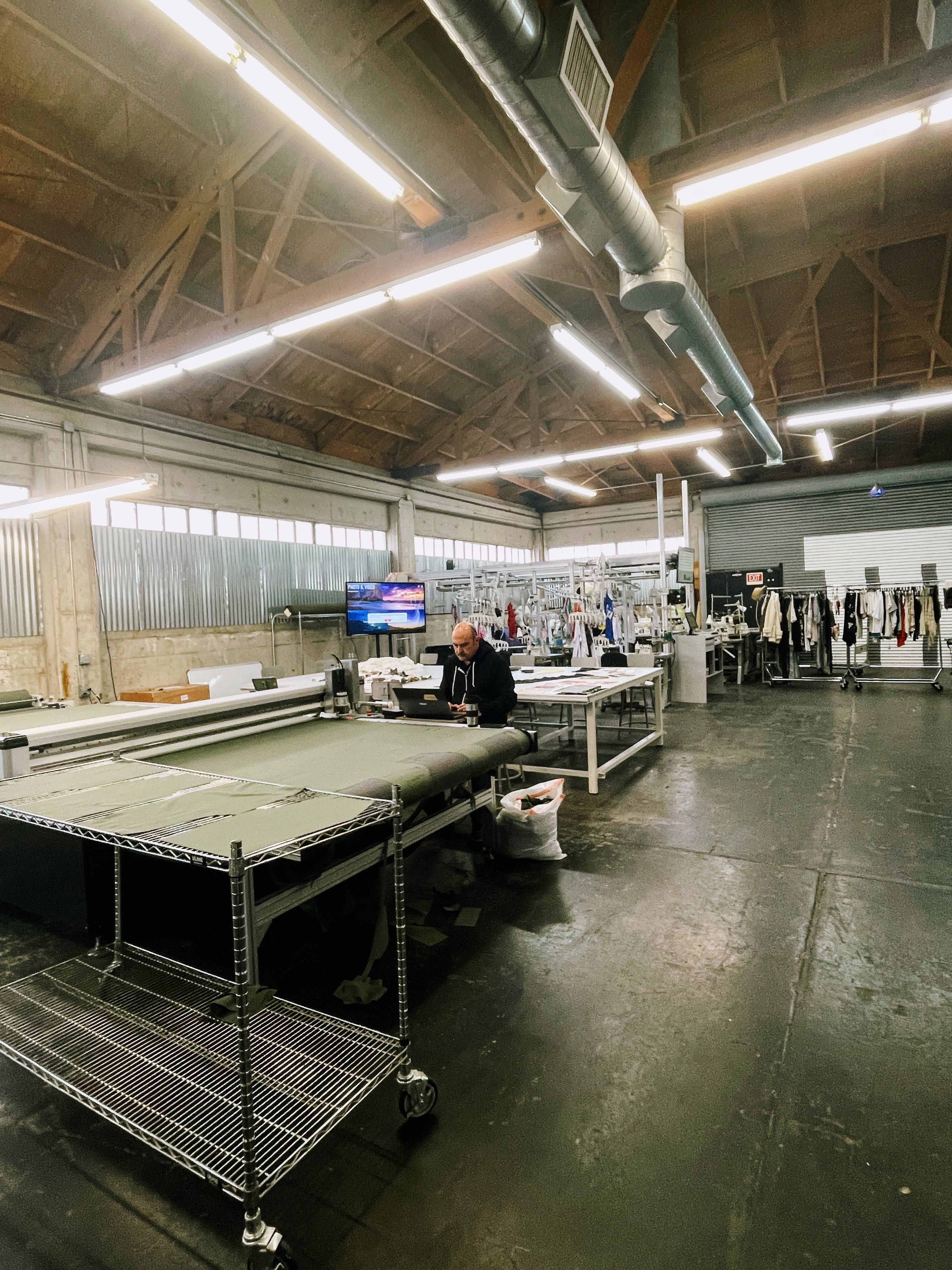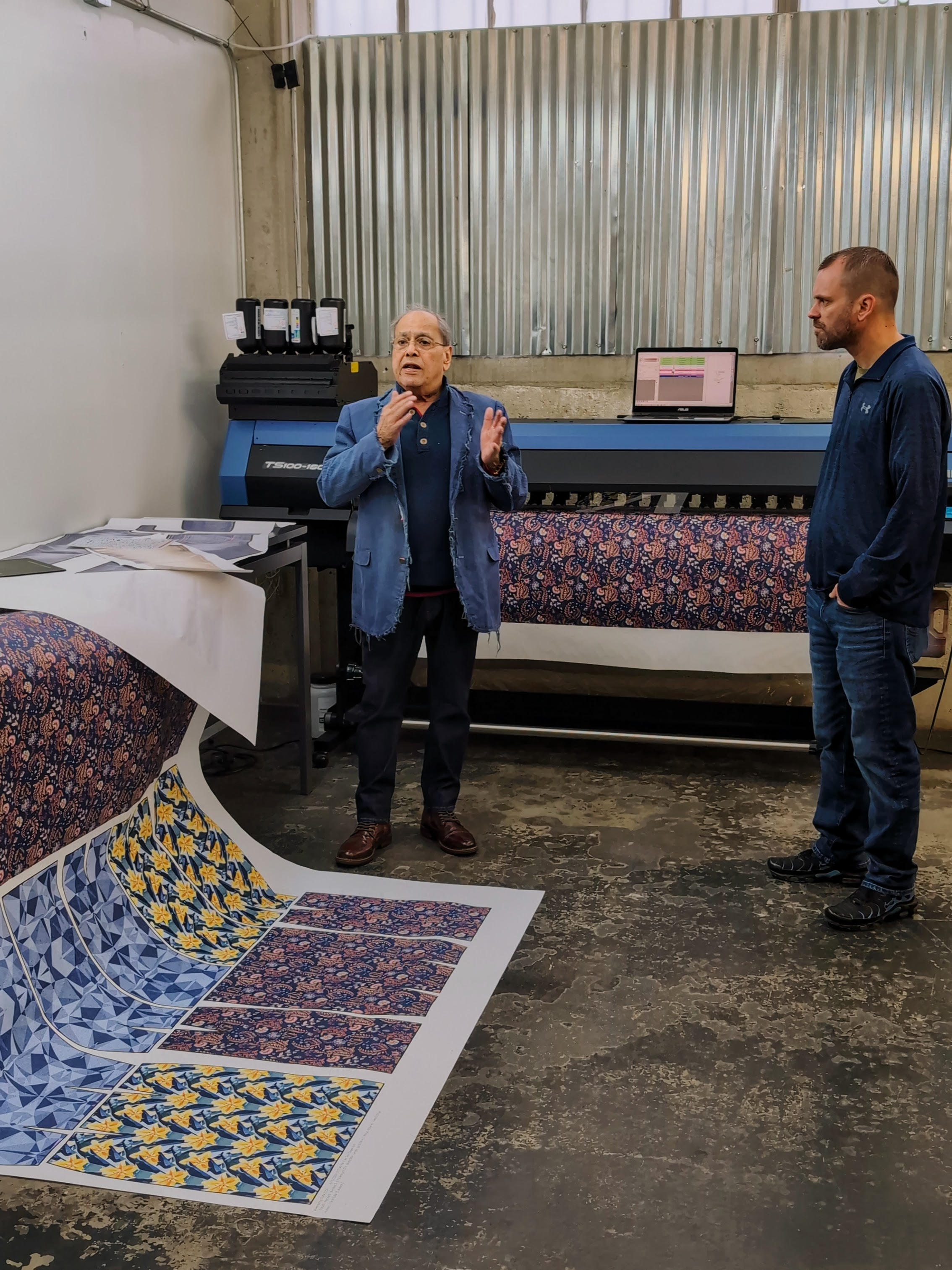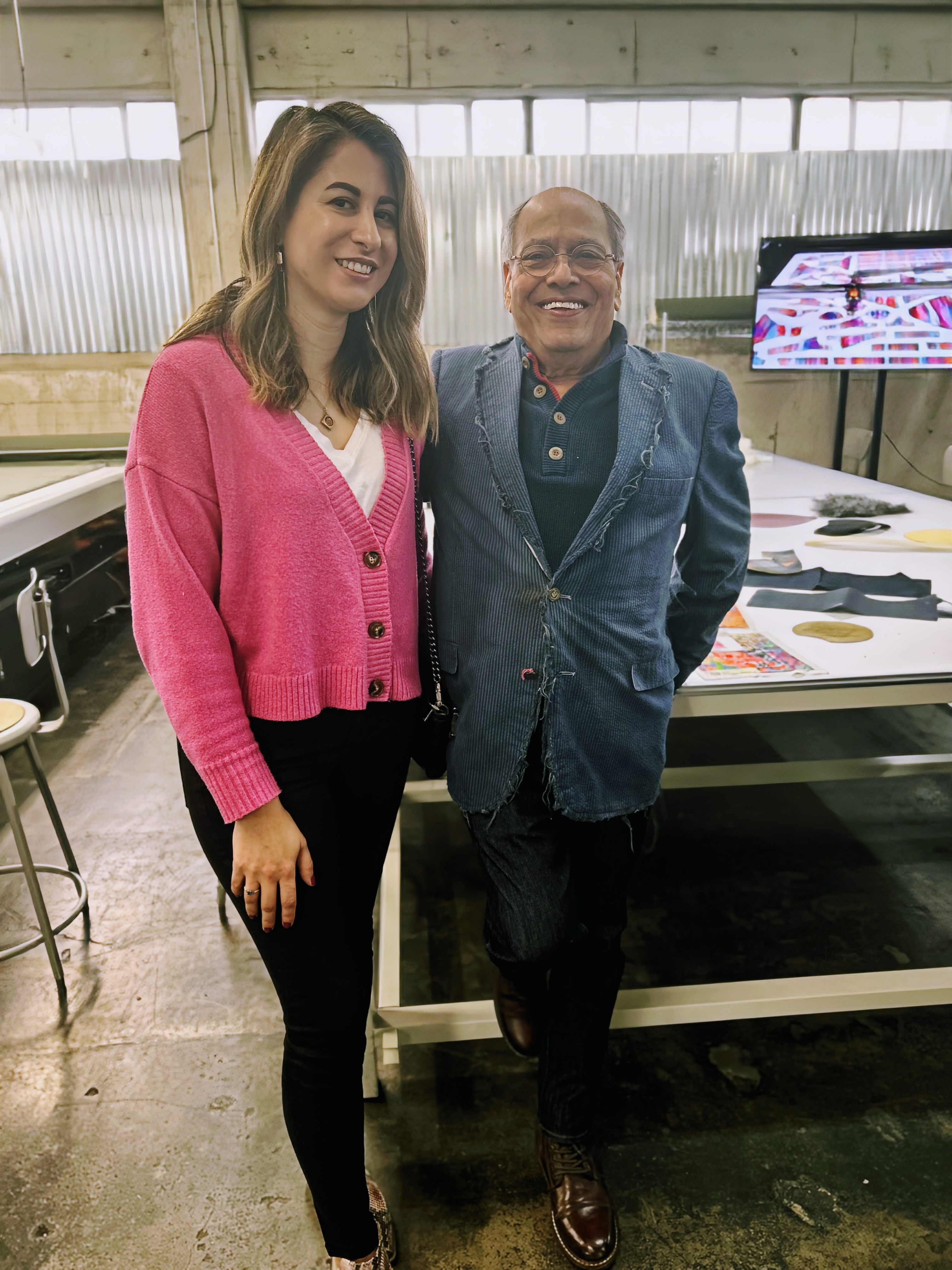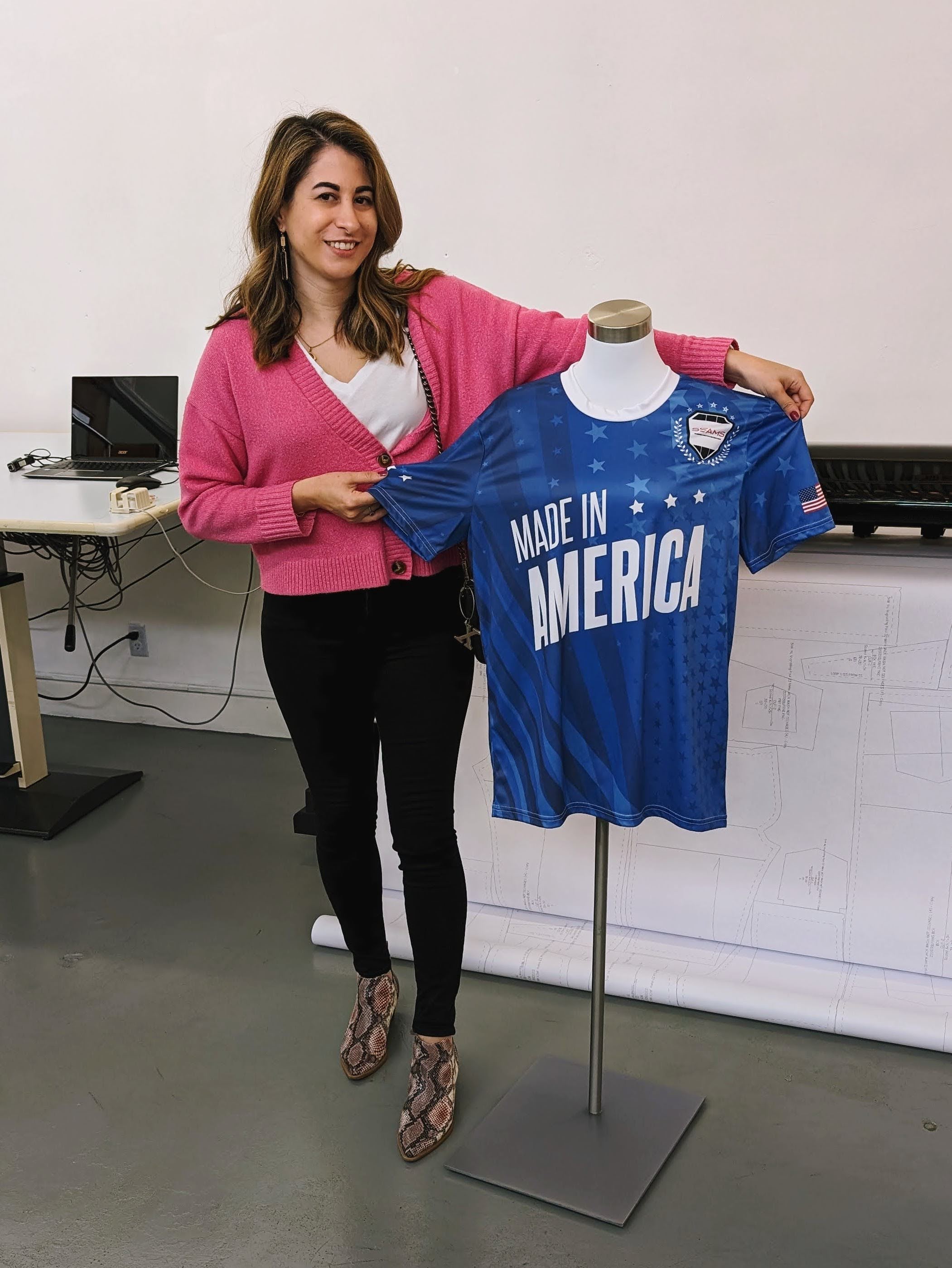As seen in SEAMS.
Tukatech – at the intersection of innovation & collaboration
Earlier this month, I found myself in LA, at the intersection of sunshine and rain. I joined many other industry colleagues for the SPESA Advancements in Manufacturing Technology conference at the California Market Center, and thus had the opportunity to tour the Tukatech Innovation Center, led by Ram Sareen, CEO and Founder of SEAMS member Tukatech. Later, I caught up with Mr. Sareen to learn more about the TUKAcenters specifically and to gain insight into Ram’s vision for the future of the industry.
First of all, I should state that I have been a Tukatech customer for a number of years now with my own business, and have been really happy with the service and software options available and have had very positive interactions with many on their team.
For those unfamiliar, TUKAcenters are fashion service providers. The services and resources offered at each of the 70+ facilities worldwide vary based on the needs of the local area. They offer data services such as file conversion, grading and marker making, as well as design and development services, and sometimes even small batch production. TUKAcenters are often led by industry professionals who want to “give back” with lending their expertise to young start-ups and growing businesses. (Watch TUKAtech video.)

In LA, visitors have access to software, including 2D and 3D pattern CAD systems, supported by a lab upstairs that tests the physics of materials to be incorporated into a design, making a digital material that is comparable to the behaviors and characteristics of the real thing. A wideformat printer allows for digital print design to come to life through sublimation prints, and a fullsize cutting machine and many industrial sewing machines makes a fully equipped sample room of a full factory accessible to a smaller brand, or allows for an existing brand to utilize services and equipment as needed, vs. making a full investment in something they use occasionally. Users can “DIY” aspects on their own, or tap into the expertise of the TUKAcenter to support them. A sewing cell featuring a conveyor system shows how a microfactory can operate successfully with big volume in a small footprint.
Also available in the space are a small photo studio, a body scanner, and a sound booth (for podcasting or to take private calls), washing machines and a kitchenette. Mr. Sareen had a full breakfast offering for his guests that morning, and I learned later that by providing a kitchen space as well as meals to his staff, sparked my understanding of how he has cultivated a culture within his company of comradery, collaboration and a team that feels like family. Many corporations say their people are family, but it’s often revealed that’s not quite the case.

One of Mr. Sareen’s early hires was a part time cleaner for the office he shared with one secretary. The woman he hired also ended up revamping the very basic kitchenette and making sandwiches, then preparing breakfast, and he hired her full time after seeing that value. Today, he has a kitchen in every office, and shared, “We all sit down and eat together [for] all meals. There’s the old saying that families who eat together, stay together. And believe it or not, it has worked for 29 years.” I find this endearing, the centeredness around community, long before this idea was popularized for the Millennial workforce.
The services available at a TUKAcenter have wide appeal. The more obvious beneficiary is an apparel startup, but it’s equally or even more important for industry professionals who have had experience doing these things, but don’t have all the resources in-house, and want to simplify or speed up their development process. So many brands are not vertically integrated. In the past, many had an in-house team of pattern makers and a sample room. These days, most of the big brands are full of technical designers and sourcing teams and don’t employ a full-time sewing or pattern making team, relying instead on their factory contractors instead. Mr. Sareen recognized an opportunity by listening to his customers: “We've had so many of them come to us who were tired of running from one contractor or one service to the other. They have to first figure out the network. It's a slow process.”
“Most of the customers here are at a loss right now. They don't know where to start. They want to bring the manufacturing back home. They want to bring the development back home. But they missed out on two things. One, they shut down the entire thing and went into tech packs and technical designers. Now that they want to bring it back, they don't know where to get started. Here, they can outsource the process.”
“Even the most established brands are now looking at a reality that the quantities are going to be smaller,” he added. “The lead time is going to be less. The prices are going to be reasonable. Now they're not looking at low prices.”
Sareen said he predicts that smaller companies between $5 million-20 million in revenue will prevail in the current landscape.
The vision for the TUKAcenters is to make a difference and add value to the industry. Sareen has sought to build a company built on relationships and value, rather than be merely transactional. Providing more value than what someone has paid for builds trust and keeps customers happy to return and to share their experiences with others.

Mr. Sareen understands the importance of looking out for small businesses, and his company’s customer service and values speak volumes. He shared that “my people were taught to go look after the little one first. Because [during a service call], the little one is 100% out of business right now, totally stopped. They need help NOW. The other [corporate customer] can wait because it's not stopping them [from doing business today]. And believe itor not, the loyalty we received seeing the customers – the little ones – grow to big companies. There are at least 200 companies here in Los Angeles alone who are doing more than 5 million dollars [in revenue], and they started by renting $200 a month outside services.”
Looking to the future, Mr. Sareen “strongly believes that pattern making is a skill,” along with grading and marking, but wonders “why do we have to spend so much time on [development]? Why can’t we minimize that and spend more time creating something beautiful at a low cost?”
Reducing sampling and reducing waste, working smarter are all part of this equation.TUKAcenters have this mentality top of mind – sharing the resources to bring them locally where they are needed, and brands can utilize only what they need, when they need it. This might look transactional on the surface, but inside, you see the community and collaboration it brings together, so in fact, it fits right into the relational business model that Ram Sareen has built over nearly 30 years. Each center is catered to the localized needs of that area, yet is able to tap into the overall network.

My conversation continues more deeply, and my impressions of the TUKAtech Innovation Center in LA is a positive one. I left the West Coast feeling inspired by the local industry, which like anywhere else in the country, has its pain points. However, the people have found a way to keep the garment district alive and thriving. Collaboration is a buzzword, yes, but with reason. We need to keep the spirit of sharing, disrupting and problem solving alive if we want the industry to grow and thrive coast to coast.